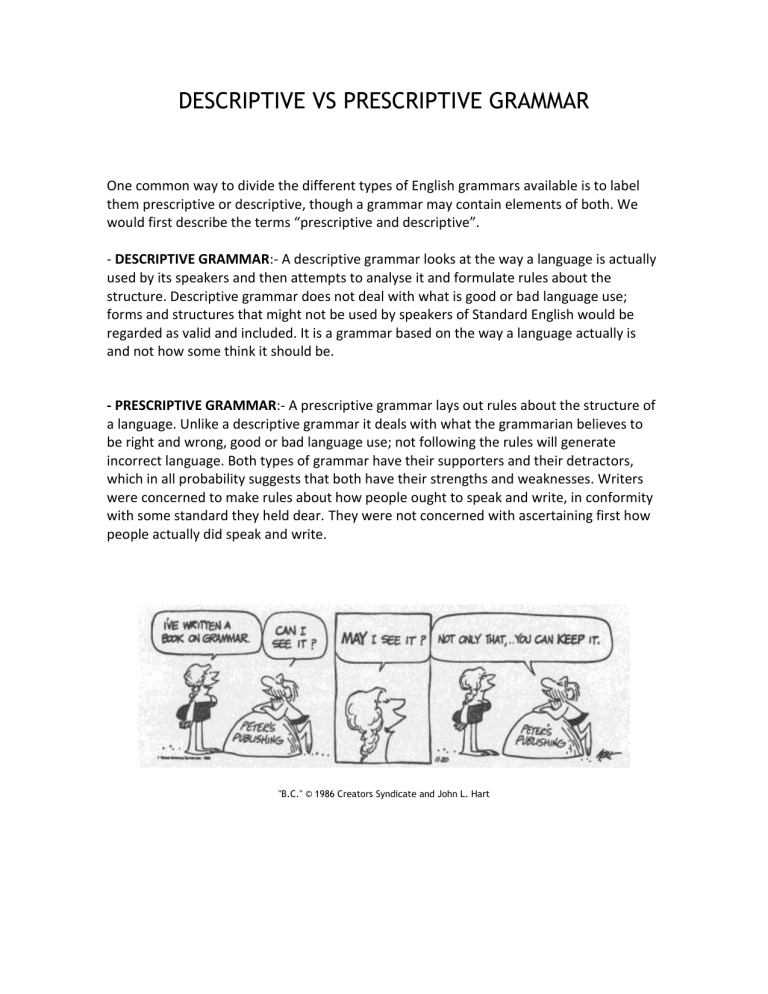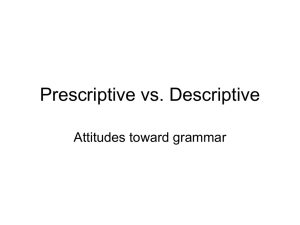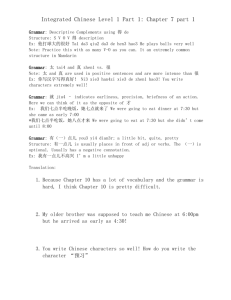linguistics is descriptive, not prescriptive

DESCRIPTIVE VS PRESCRIPTIVE GRAMMAR
One common way to divide the different types of English grammars available is to label them prescriptive or descriptive, though a grammar may contain elements of both. We would first describe the terms “prescriptive and descriptive”.
- DESCRIPTIVE GRAMMAR:- A descriptive grammar looks at the way a language is actually used by its speakers and then attempts to analyse it and formulate rules about the structure. Descriptive grammar does not deal with what is good or bad language use; forms and structures that might not be used by speakers of Standard English would be regarded as valid and included. It is a grammar based on the way a language actually is and not how some think it should be.
- PRESCRIPTIVE GRAMMAR:- A prescriptive grammar lays out rules about the structure of a language. Unlike a descriptive grammar it deals with what the grammarian believes to be right and wrong, good or bad language use; not following the rules will generate incorrect language. Both types of grammar have their supporters and their detractors, which in all probability suggests that both have their strengths and weaknesses. Writers were concerned to make rules about how people ought to speak and write, in conformity with some standard they held dear.
They were not concerned with ascertaining first how people actually did speak and write.
"B.C." © 1986 Creators Syndicate and John L. Hart
LINGUISTICS IS DESCRIPTIVE, NOT PRESCRIPTIVE
Many people associate knowing a language with speaking and writing it according to the grammatical rules established for that language in grammar books and dictionaries. The study of linguistic competence does not include the study ofprescriptive standards that claim that one sentence rather than another is correct. Instead, linguists are interested in what speakers of a language actually say and what they accept as possible in the language, regardless of whether the construction matches the grammar rules posited by the grammar “police.” This approach to grammar is descriptiverather than prescriptive.
Descriptive grammar is what speakers say, and when, why and how they say it (and not
whether they should or shouldn't say it.) Linguists concern themselves with discovering what speakers know about a language and describing that knowledge objectively. They devise rules of descriptive grammar. For instance, a linguist describing English might formulate rules such as these:
1.
Some English speakers end a sentence with a preposition (Who do you want to speak to?)
2.
Some English speakers use double negatives for negation (I don't have nothing.)
3.
Adjectives precede the nouns they modify (red book, nice guy)
4.
To form the plural of a noun, add -s (1 room, 2 rooms; 1 book, 2 books)
5.
The vowel sound in the word suit is produced with rounded lips.
Linguists don’t make judgment calls as to whether the speakers should or shouldn't speak a certain way. Descriptive grammar, then, is created by linguists as a model of speakers' linguistic competence.
Prescriptive grammar is what speakers should or shouldn't say. When most people think of "grammatical rules," they think of what linguists call rules of prescriptive grammar.
Prescriptive rules tell you how to speak or write, according to someone's idea of what is
"good" or "bad." Of course, there is nothing inherently good or bad about any use of language; prescriptive rules serve only to mold your spoken and written language to some norm. Here are a few examples of prescriptive rules; you can probably think of others.
1.
The subject of a sentence must agree with the verb (The instructions are clear NOT
The instructions is clear.)
2.
Use much for count nouns. Use many for non-count nouns (We don't have much coffee AND We don't have manycups of coffee.)
3.
Capitalize the first letter of a sentence (The television is broken. It needs to be fixed.)
4.
Use subject pronouns after the verb be (It was I who called you NOT It was me who called you.)
5.
Use the definite article the before names of rivers and geographical areas but not before the names of lakes or continents (the Nile, the Middle East AND Lake
Tahoe, Asia)
Notice that the prescriptive rules make a value judgment about the correctness of an
utterance. Descriptive rules, on the other hand, accept the patterns a speaker actually uses and try to account for them. Descriptive rules allow for different varieties of a language; they don't ignore a construction simply because some prescriptive grammarian doesn't like it.
On this basis a hierarchy of grammaticality and acceptability was created in order to
“describe” structures that may actually occur. a.
Grammatical and meaningful. b.
Ungrammatial but meaningful. c.
Grammatical but meaningless. d.
Ungrammatical and meaningless.







